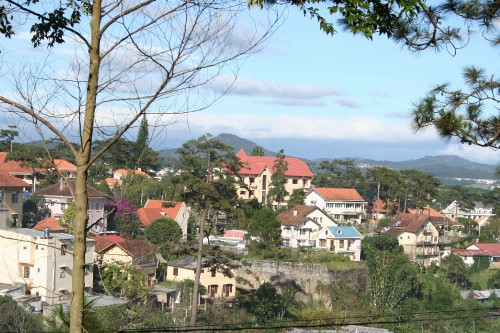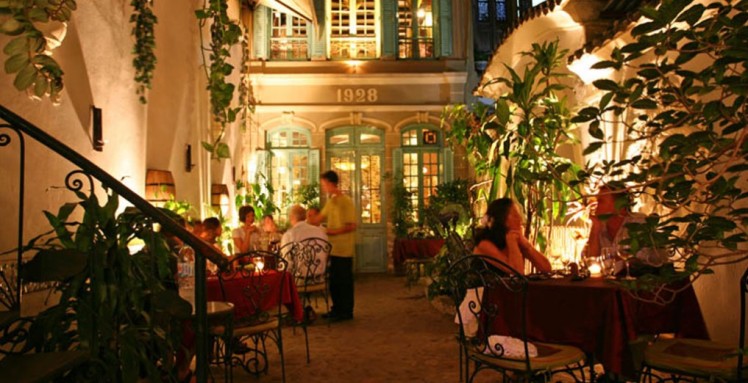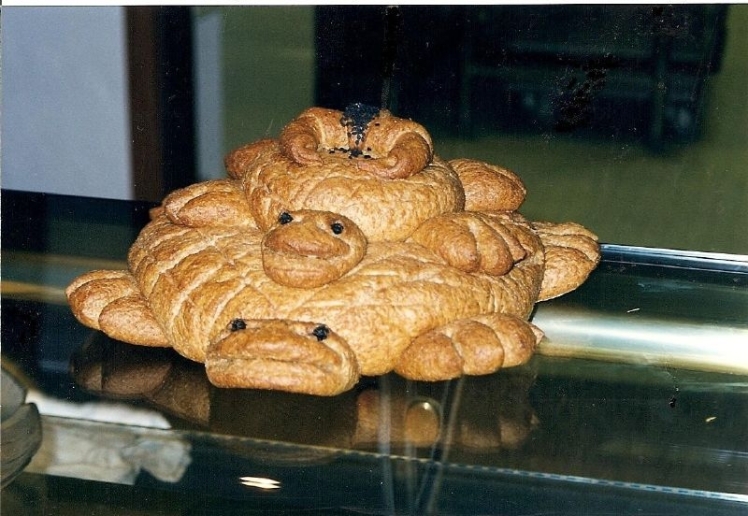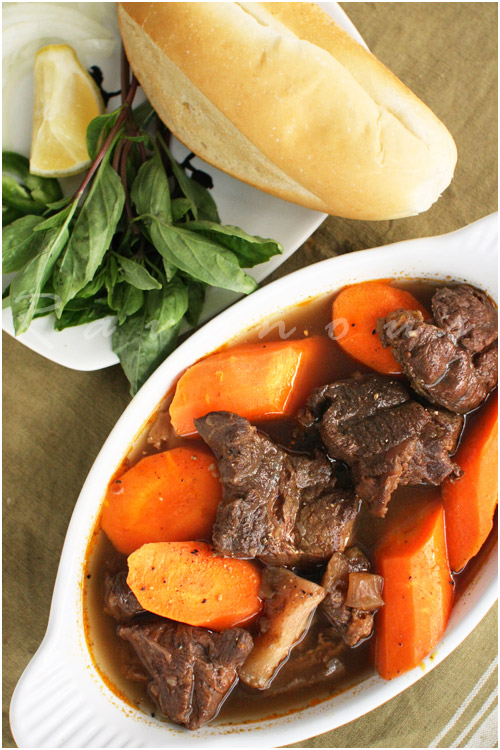In the film, “Indochine,” you sense the rampant orientalism that made Edward Said one of the most quoted scholars on the subject of colonialism and the creation of the “Other.” The heat, the fans, the sweat, the passions, the exoticism and erotocism, all these visual cues recreate the mental picture many of us have regarding colonialism, at least of the type practiced by the Western powers in the nineteenth and twentieth centuries. Mix in the complex history of Vietnam and you’ve got a real mélange, an astonishing mix of ingredients.
Although the French ruled Vietnam for only ninety years beginning in 1858, their impact on the region called French Indochina, including Laos and Cambodia, began much earlier with the arrival of French Jesuit missionaries in 1615 and was profound.
According to David Burton, in his enlightening but incomplete French Colonial Cookery: A Cook’s Tour of the French- Speaking World (2000), the Vietnamese only added a few ingredients of French cooking to their plates and stoves: “French bread, pâté, pâtisserie, jams and conserves, butter, coffee, beer, wine, condensed milk, yoghurt, ice cream, and vegetables such as artichokes, cabbages, cauliflowers, carrots, and asparagus.” (And later, “La Vache Qui Rit” cheese, seemingly indestructible no matter what tropical heat storekeepers subjected it to, no matter where in the tropics, including Burkina Faso, formerly Haute Volta.) Many of the vegetables grew well in Dalat, a hill station 4000 feet about sea level. In a manner akin to the British colonials in similar hill stations in India, the French retreated to Dalat to escape the impossibly hot summer weather.
Other foods brought by the French to Vietnam, and adopted by Vietnamese cooks, include beef (beef stew or Bo Ragout still appears on menus, often without Asia-specific spicing), crème caramel (flan), meat-filled pastries, and Banh Mi, the ubiquitous sandwiches made with baguettes and liver pâté. Some writers suggest that French soup cookery also influenced Vietnamese soup-making, too.

In her colonial-era diary, Claudie Beaucarnot wrote in 1943, “We equally devoured the crêpes and the Vietnamese sausage purchased in a small village where we stopped to procure charcoal,” indicating that two of France’s signature dishes — saucisses (sausages) and crêpes — were available as street food.
But recall that this is just a brief glimpse (for now) of the situation vis-a-vis French food in Vietnam. The impact of ninety years of colonialism seems not to have made a huge dent in the traditional cuisine of the country — heavily influenced as it was by Chinese cuisine since the second century AD. A fascinating story, worthy of a film, yes, just not “Indochine,” which I confess I did like because of the political statements it made alongside the usual portrayal of colonialists and their economic and social power and privilege.


The following photos hint at the lingering legacy of France’s ninety-year rule of Vietnam:








Thit Bo Kho, a Vietnamese version of French beef stew, reflects the French-influenced use of beef in Vietnamese cuisine. Here’s a link to a recipe that ought to warm you up on a cool winter day.

*With regards to Tim O’Brien, The Things They Carried (1990).
© 2011 C. Bertelsen

The link to what? The recipe? Click on this text above the photo of the beef stew: “Here’s a link to a recipe … “
I didn’t see the link?